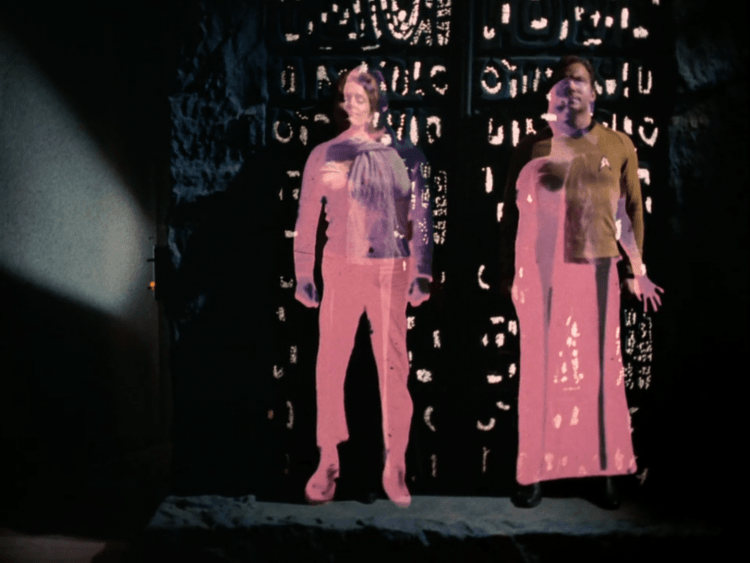
Hello and as always, welcome to ‘Final Frontier Friday’. It’s back to the original series this week, which I now realize marks (as improbable as it sounds) the first time I’ve covered an episode of that series in 2019. Seriously. I double checked and everything. I’m as confused as you are. Anyway, this week we’ll be looking at ‘Turnabout Intruder’.
‘Turnabout Intruder’ first aired fifty years ago this month (with the actual anniversary being last Monday – June 3rd), and was, of course, the last episode of the original ‘Star Trek’. That’s a subtle but important distinction: “last episode” as opposed to “series finale”. Because at the time, series finales weren’t really a thing in the modern sense, that being a finale episode that ties up the series in a neat little bow. That’s not to say they didn’t exist, but they were very much the exception rather than the rule. Instead, the nature of the medium as a whole tended toward more episodic storytelling generally and as a result, it was more common to end a series with “just another episode.” And on top of that, ‘Star Trek’ was cancelled. Maybe they would have wrapped the series with a formal end to the five-year mission, but I wouldn’t put money on it.
 Loosely inspired by the Thorne Smith novel ‘Turnabout’, the episode follows the footsteps of several other third season episodes and indulges a cheeseball sci-fi cliché. This time around, it’s the body swap. But hey, there’s nothing that says that a cliched story is inherently a bad story. Hell, ‘Buffy the Vampire Slayer’ would invoke this exact trope thirty years after ‘Turnabout Intruder’ aired for one of its more memorable two-part episodes. So at the end of the day, it’s really all about the execution. How, then, did ‘Star Trek’ pull it off?
Loosely inspired by the Thorne Smith novel ‘Turnabout’, the episode follows the footsteps of several other third season episodes and indulges a cheeseball sci-fi cliché. This time around, it’s the body swap. But hey, there’s nothing that says that a cliched story is inherently a bad story. Hell, ‘Buffy the Vampire Slayer’ would invoke this exact trope thirty years after ‘Turnabout Intruder’ aired for one of its more memorable two-part episodes. So at the end of the day, it’s really all about the execution. How, then, did ‘Star Trek’ pull it off?
Responding to a distress call, the Enterprise arrives Camus II. Upon arrival, physician Arthur Coleman informs Kirk, Spock, and McCoy that the archaeological team has been decimated by exposure to radiation. Among those affected is expedition leader Janice Lester, who also has a romantic history with Kirk. The two are left alone while Spock, McCoy, and Coleman tend to the other survivors. The two briefly reminisce about their time together as Lester reveals that she still resents her inability to make captain. As Kirk explores the room, he approaches an ancient alien machine, which Lester triggers, freezing him in place. She joins him in the machine and activates it, transferring her mind into Kirk’s body and vice-versa.
With the transfer completed, Lester declares her intention to replace Kirk in command of the Enterprise. She begins to strangle her former bod, but stops when the others return. McCoy reports that the rest of Lester’s team has died, leaving her and Coleman as the sole survivors. McCoy attributes this to celebium poisoning, though Coleman disputes that, creating a disagreement that could affect the treatment that “Lester” receives. After returning to the Enterprise, Lester and Coleman meet in sickbay to discuss the situation, revealing that they conspired to kill the archaeological team. Coleman, however, flatly refuses to kill Kirk, who is being kept unconscious, adding that on the surface he tried to distract Spock and McCoy long enough for Lester to do the deed herself. They are interrupted by the arrival of McCoy, who is surprised to see “Kirk” in sickbay. Over the doctor’s objections, “Kirk” takes him off the case, leaving Coleman in charge of “Lester” and her treatment.
 “Kirk” orders Sulu to change course so that they can drop “Lester” off at a hospital on Benecia Colony. Spock recommends that they instead divert to Starbase 2, as the facility will be able to provide better treatment and the trip will not require delaying their scheduled rendezvous with the Potemkin. He is sharply rebuked, as this shiny new captain doesn’t take kindly to the perceived challenge. Later, McCoy renews his objection to the decision to bar him from treating “Lester,” revealing that he’s looked into Coleman’s background and found that he served as chief medical officer on a starship… until he was relived due to administrative incompetence and flagrant medical blunders.
“Kirk” orders Sulu to change course so that they can drop “Lester” off at a hospital on Benecia Colony. Spock recommends that they instead divert to Starbase 2, as the facility will be able to provide better treatment and the trip will not require delaying their scheduled rendezvous with the Potemkin. He is sharply rebuked, as this shiny new captain doesn’t take kindly to the perceived challenge. Later, McCoy renews his objection to the decision to bar him from treating “Lester,” revealing that he’s looked into Coleman’s background and found that he served as chief medical officer on a starship… until he was relived due to administrative incompetence and flagrant medical blunders.
